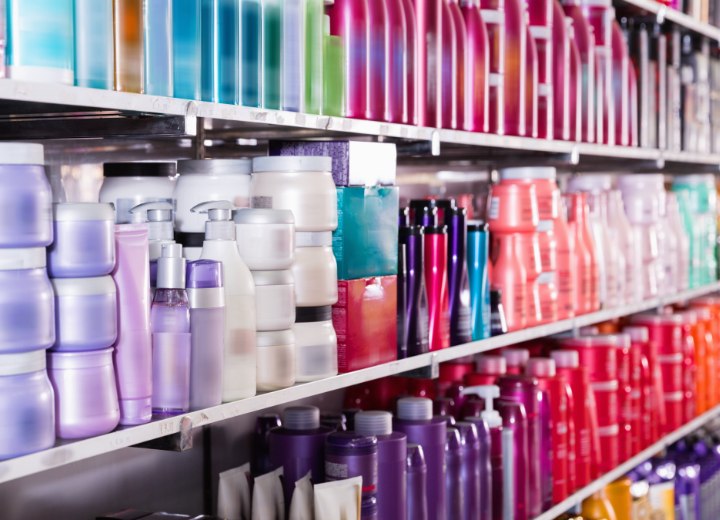Hair Product Ingredients Explained (2)

EUGENOL
This compound is a member of the phenylpropanoids class of compounds and is a clear to pale-yellow liquid extracted from certain essential oils (especially from clove, nutmeg, cinnamon, and bay leaf). It is soluble in water and organic solvents. It is used primarily for its fragrance and flavoring qualities, and is also used as a local antiseptic and anesthetic in medical applications.
It is possible to overdose on this compound, resulting in a range of symptoms, from blood in the urine, to convulsions, diarrhea, nausea, unconsciousness, dizziness, or a rapid heartbeat. It may also cause contact dermatitis on the skin.
This product is an emulsifier and dispersing agent, and is also classified as a pearlescent agent to keep otherwise opposing substances blended in an emulsion. It is also a humectant which absorbs moisture from the air to keep the hair and skin moisturized. It can further be used as an emollient, lubricant, emulsifier, and diluting agent in cosmetics.
GLYCOL DISTEARATE
Glycol distearate is a form of various alcohols containing two hydroxyl groups and is a common ingredient in shampoos and hair coloring agents as an emulsifier.
HYDROXYETHYLCELLULOSE
This nonionic polymer is water-soluble and is used as an emulsifier and a thickening agent.
LANOLIN
This substance is the sebaceous secretion of wool-bearing mammals such as sheep. It is chemically akin to wax and can be used as a skin ointment and water-proofing wax. It is used in some conditioners to coat and seal the hair against damage and excess moisture to prevent frizz.
LECITHIN
This is any of a group of yellow-brownish fatty substances occurring in animal and plant tissues, and in egg yolk. It acts as a surfactant in cosmetic chemistry.

This hydrocarbon is a colorless liquid at room temperature with a strong citrus smell. It takes its name from the lemon - as the rind of the lemon and other citrus fruits contain a considerable amount of the substance. It is added to cleansers for fragrance and is used as a solvent.
METHYLCHLOROISOTHIAZOLINONE
This compound is a preservative with antibacterial and antifungal effects and is effective against bacteria, yeasts, and fungi. It is used in many water-based cosmetics and hair care products.
METHYLISOTHIAZOLINONE
This compound is another biocide used as a preservative and to control microbial growth in water-containing solutions.
METHYLPARABEN
This compound is widely used as a preservative for food, drugs, and cosmetics as it has antifungal properties. Similar varieties are Ethylparaben, Propylparaben, and Butylparaben.
P-PHENYLENEDIAMINE
This aromatic amine, also called paraphenylenediamine (or PPD), is used as a component of engineering polymers and composites, aramid fibers, hair dyes, rubber chemicals, textile dyes, and pigments. PPD is chosen because of its low toxicity, stability at high temperatures, high strength, and resistance to chemicals and electricity.
PPD is found in almost every hair dye on the market regardless of brand. The darker the color of the product, the higher the concentration of PPD is likely to be. Even so-called natural and herbal hair colors contain PPD, even though they may be ammonia-free. The only natural dyes that do not contain PPD are body-art quality henna and indigo.
The Center for Disease Control lists PPD as a contact allergen which can lead to throat irritation, bronchial asthma, and sensitization dermatitis.
PEG-2 OLEAMINE
This is a synthetic polymer made from oxirane (ethylene oxide) and amines derived from fatty acids. In most cosmetic preparations, it acts as an emulsifier.
POLYQUATERNIUM-10
This quaternary ammonium compound absorbs well into proteinaceous surfaces, such as that of the hair. In shampoos and other products, it can reduce static electricity and increase the body, suppleness, and shine of the hair.
RESORCINOL
This chemical compound is obtained by fusing many resins with potassium hydroxide and through distillation of Brazilwood extract. It is used to create diazo dyes and is also used as an antiseptic and disinfectant, and in ointments as a topical treatment of eczema.
SODIUM METABISULFITE
This inorganic compound is used as a disinfectant, antioxidant, and preservative.
©Hairfinder.com
See also:
Hair products Q&A
Hair color allergies